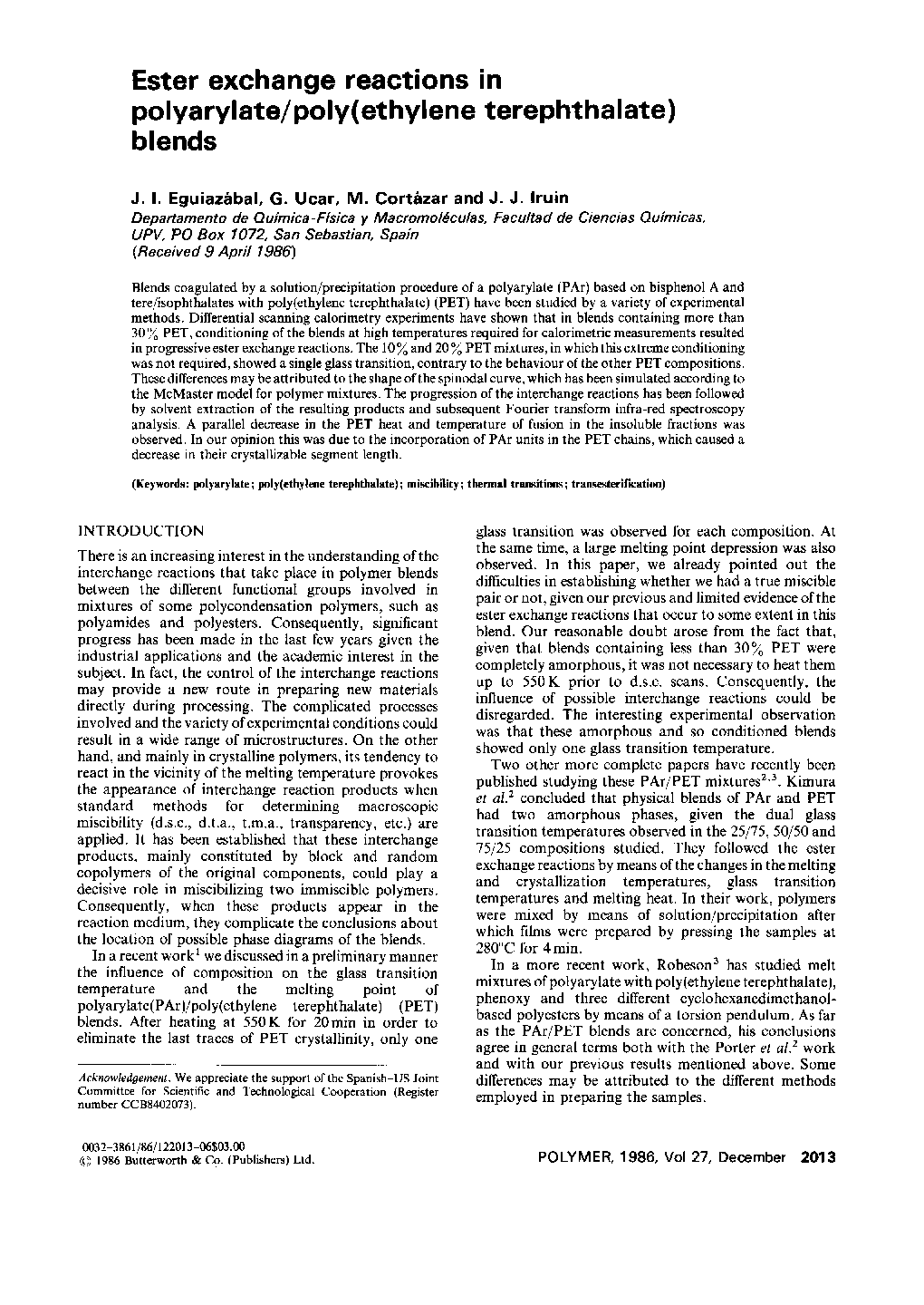| Article ID | Journal | Published Year | Pages | File Type |
|---|---|---|---|---|
| 5200623 | Polymer | 2018 | 6 Pages |
Abstract
Blends coagulated by a solution/precipitation procedure of a polyarylate (PAr) based on bisphenol A and tere/isophthalates with poly(ethylene terephthalate) (PET) have been studied by a variety of experimental methods. Differential scanning calorimetry experiments have shown that in blends containing more than 30% PET, conditioning of the blends at high temperatures required for calorimetric measurements resulted in progressive ester exchange reactions. The 10% and 20% PET mixtures, in which this extreme conditioning was not required, showed a single glass transition, contrary to the behaviour of the other PET compositions. These differences may be attributed to the shape of the spinodal curve, which has been simulated according to the McMaster model for polymer mixtures. The progression of the interchange reactions has been followed by solvent extraction of the resulting products and subsequent Fourier transform infra-red spectroscopy analysis. A parallel decrease in the PET heat and temperature of fusion in the insoluble fractions was observed. In our opinion this was due to the incorporation of PAr units in the PET chains, which caused a decrease in their crystallizable segment length.
Related Topics
Physical Sciences and Engineering
Chemistry
Organic Chemistry
Authors
J.I. Eguiazábal, G. Ucar, M. Cortázar, J.J. Iruin,
